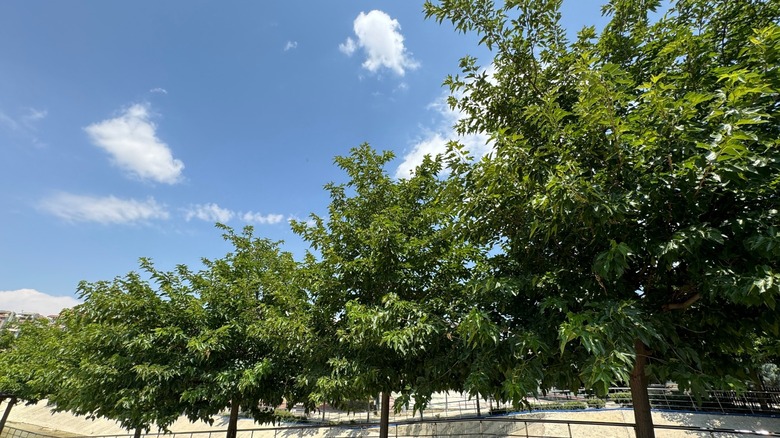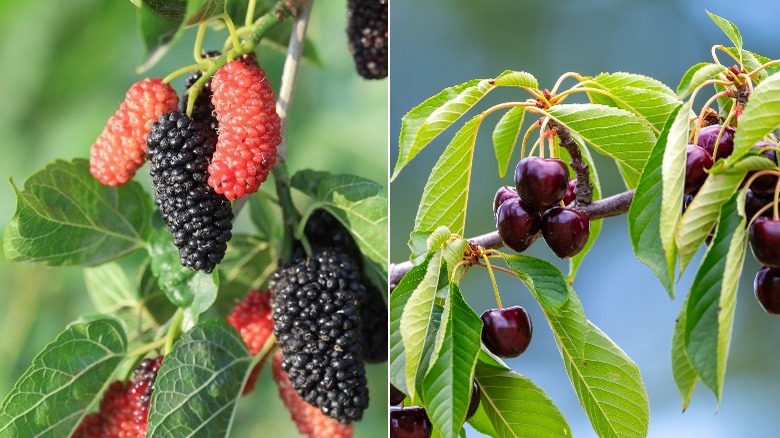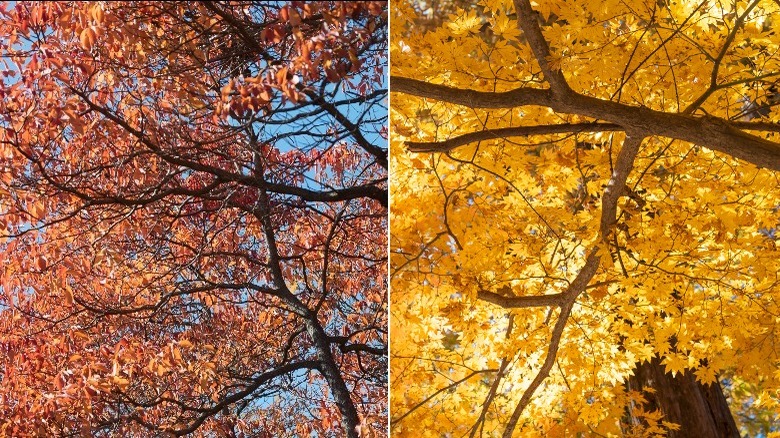Better Alternatives To Grow Instead Of White Mulberry Trees
A highly invasive tree originally from China, the white mulberry (Morus alba) was brought to the United States to begin colonial silkworm production. However, while the silkworm industry in the U.S. never quite took off due to the different climate, white mulberry trees quickly multiplied. Every state except for Nevada, Hawaii, and Alaska has these invasive trees, which displace native plants and intrude into any open, sunny area. It is one of the worst fast-growing trees you don't want to plant in your yard, thanks to its rapid spread.
Planting a white mulberry tree on your property will not necessarily cause problems. However, trees release pollen grains at speeds that reach 350 mph and can produce 20 million seeds per tree, which means you inadvertently could contribute to the spread of this aggressive invasive tree. White mulberries can be highly detrimental to native red mulberry (Morus rubra) trees in your area, cross-pollinating with them to form unwanted hybrid populations.
Thankfully, there are many other alternatives to the white mulberry tree. If you want something that will bear fruit, there are native options with delicious results. There are also many varieties of shade trees that grow well in different conditions without the downsides of the white mulberry.
Plant a native fruit tree like red mulberry or black cherry
The only mulberry tree native to North America, red mulberry trees produce delicious, edible fruit similar to white mulberries. Red mulberries will attract many different birds to your yard who enjoy the sweet fruit. Two types of butterfly larvae (the red admiral and mourning cloak) also feed on the leaves of this tree.
Compared to the white mulberry, this tree can be a little more picky with its growing conditions. Whereas white mulberry trees will latch onto any open, disturbed area in forests and fields alike, red mulberry trees prefer moist, well-draining soil. But red mulberry trees are also tolerant of heat and drought in moderation. Native plant resources in states across the U.S. can help you learn how to grow and take care of mulberry trees.
Another excellent fruit tree native throughout much of the eastern U.S. is the black cherry tree (Prunus serotina). Prized for its wood, bark, and fruit, the black cherry tree produces fruit commonly turned into jelly and wine (not to be eaten raw). As an alternative to the white mulberry, the black cherry also attracts numerous butterflies, including eastern tiger swallowtails and wild cherry sphinx moth — although, beware of its abundance of seedlings.
Try a shade tree substitute like the ginkgo or sassafras
If the main motivation for planting a white mulberry isn't the fruit but its versatility as a shade tree, consider other trees like ginkgo (Ginkgo biloba) or sassafras (Sassafras albidum). Ginkgo trees can grow very tall, upwards of 80 feet high. They are also incredibly tolerant of urban environmental factors, such as heat, air pollution, and salt. The pretty yellow color of its leaves in autumn adds a spot of color to the landscape, so you won't even miss the white mulberry's similar fall foliage. As an added benefit to urban and rural property owners, the ginkgo is a plant that keeps away deer from your yard.
An alternative shade tree option if you want to stick with native plants, the sassafras provides excellent coverage, growing between 35 and 50 feet tall. This unique tree showcases a rainbow of colors throughout the seasons and tolerates clay soil and drought conditions. In summer, the tree grows blue fruit and, in fall, showcases various colors, from orange to scarlet to purple. It is another tree similar to the red mulberry that will attract many birds and butterflies to your yard while providing excellent shade upon maturity. Pruning is required to cultivate it as a single-trunk tree.


